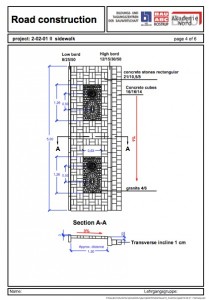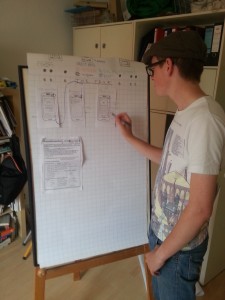Rapid Development for Rapid Turbine
I guess many of you are enjoying your holidays now. Here at Pontydysgu we’re ploughing ahead with our summer project, codenamed Rapid Turbine. Rapid Turbine is a spin out from the Learning layers project design group called Sharing Turbine.
 The design idea has followed extensive discussion with Bau ABC, a large training organisation for the building industry in Lower Saxony and Bremen in north Germany. The apprenticeship system in Germany is based on a Dual System, with apprentices learning both within companies and within vocational schools. However in the construction trade there are three venues for learning, the company, the vocational school and the training centres.
The design idea has followed extensive discussion with Bau ABC, a large training organisation for the building industry in Lower Saxony and Bremen in north Germany. The apprenticeship system in Germany is based on a Dual System, with apprentices learning both within companies and within vocational schools. However in the construction trade there are three venues for learning, the company, the vocational school and the training centres.
Training in the training centre is organised around practical tasks which may take from one to three or four days to complete. The tasks are documented in something called the White Folder which is also used for reporting on work. This has a number fo problems – it takes time to update content and despite the use of colour photocopying has limitations in terms of media. Perhaps the biggest drawback is teh lack of portability, thus limiting the use of learning materials or of apprentices/ past learning in the company or the vocational school.
Thus the idea of Sharing Turbine is to produce a mobile app which can provide interactivity whilst undertaking workplace learning tasks. But the more we have looked at developing such an app – the more daunting it seems. Wireframes and diagrams have multiplied, with multiple use cases and endless meetings.
So Rapid Turbine has been designed as a rapid application project to get something out. And my thinking is until we have produced something, we will not really understand what we are doing. So we have taken just one task – Trench digging and pipe installation- and are trying to produce an app.
So far we have hit two big issues. The first is the pedagogic approach. We want to go further than just producing information on how to do the task – even  with nice video. The mobile app should stimulate not just interactivity but activity in the work process. And of course there are many real life artefacts which are used in that activity.
with nice video. The mobile app should stimulate not just interactivity but activity in the work process. And of course there are many real life artefacts which are used in that activity.
The second issue is establishing a workflow. Ultimately our aim is that our colleagues from Bau ABC will be able to produce the learning materials themselves. So far our workflow is fourfold. Firstly we are producing wireframes. Although we have used Balsamic in teh past, at the moment our designers, Owen Gray and Martina Luebbing are preferring to work on flipchart paper. then we need to generate the HTML, CSS, Javascrtipt etc. for the app. This we plan to do using Twitter Bootstrap and an html editor. And then we will use the Tribal m-Learning program to produce the App.
So far so good. We are still at the wireframe stage. I will update you on how it all goes.
